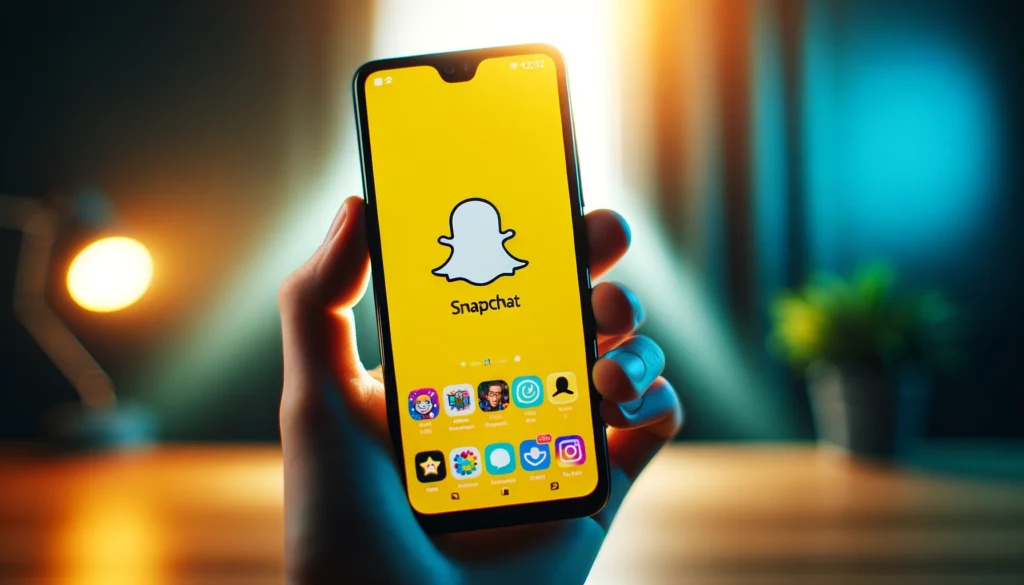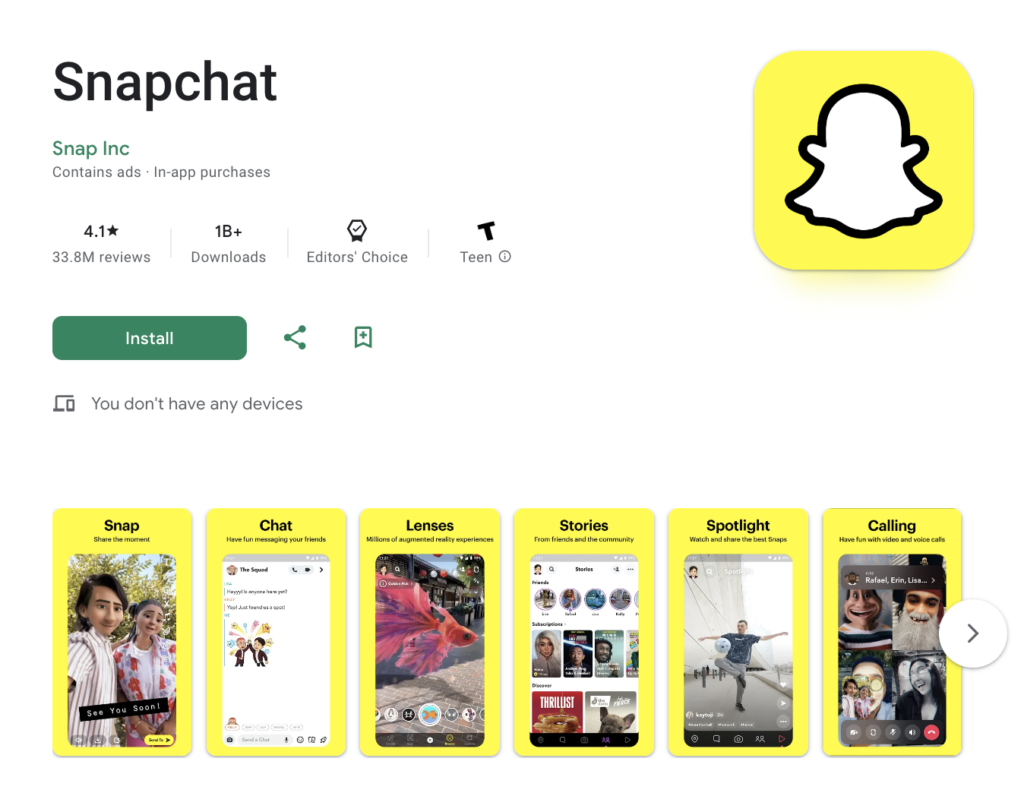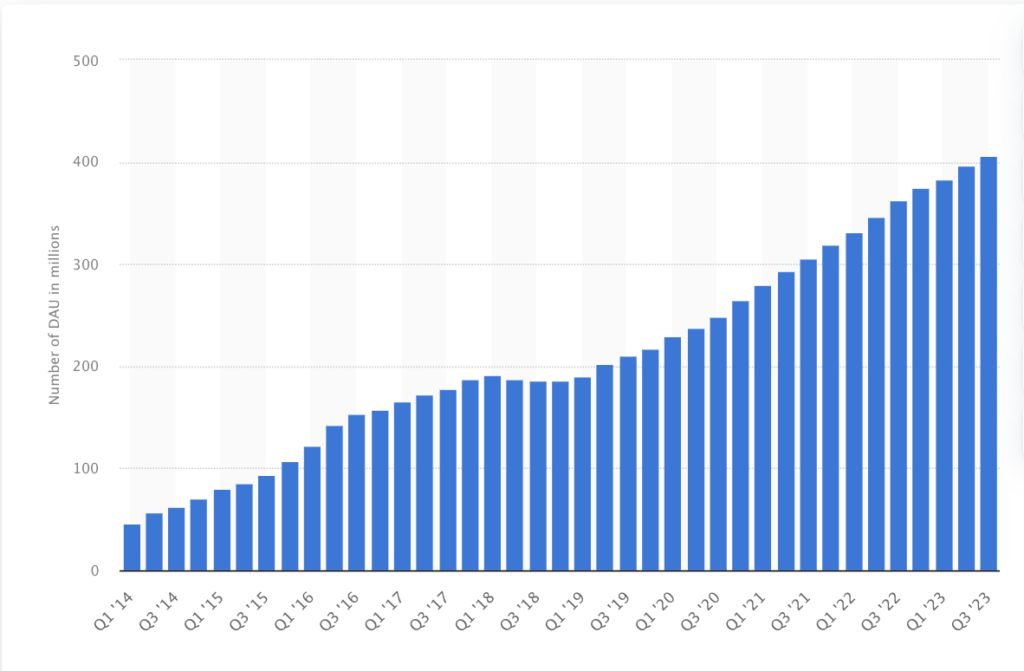

Last updated on

Snapchat, renowned for its transient content, pioneering augmented reality (AR) functionalities, and unwaveringly devoted user community, stands as a pivotal figure in the realm of social media.
While it occasionally operates in the background amidst the prominence of platforms like TikTok, YouTube, and Instagram, Snapchat remains a potent marketing instrument, possessing a distinctive allure to its audience.
This article delves into the essence of Snapchat, offering insights into user perceptions of the platform and delineating its strengths. From analyzing user growth patterns to assessing the efficacy of advertising strategies, we unravel the current landscape of Snapchat.
Snapchat stands out as a social media platform enabling users to share photos and videos with their online circle of friends and followers.
Diverging from the norm of platforms such as Facebook, Instagram, and TikTok, where content tends to be preserved indefinitely, Snapchat specializes in ephemeral content exclusively.
Content shared on Snapchat vanishes after viewing, introducing an element of spontaneity and confidentiality to online exchanges.
Augmented reality serves as a cornerstone of Snapchat’s entertainment strategy, captivating its audience with interactive and immersive experiences facilitated by features like AR lenses.
Additionally, users have access to an array of stickers, drawing tools, and emojis, allowing them to infuse a personal flair into their posts.
Originating as a modest set of tools in 2011, Snapchat’s repertoire has since evolved into a vast collection of groundbreaking features. These include a personalized 3D Snap Map, gesture recognition, audio suggestions for lenses, generative AI functionalities, and an array of other innovations.
Signing up for Snapchat is a breeze. Just head to Google Play or the App Store, download the app, install it on your device, and you’re all set to go!

That figure, disclosed by the company in October 2023, signifies a year-over-year rise of 43 million users, constituting a 12% increase.
Here’s a Statista chart depicting Snapchat’s user growth from 2014 to 2023:

Furthermore, boasting 750 million monthly active users (MAUs), Snapchat claims the fifth position among the world’s largest social media networks.
According to Snapchat’s advertising data, the platform boasts 243.5 million users aged 18 to 24, comprising 38.6% of its total ad audience. The second-largest demographic consists of users aged 25 to 34, followed by those aged 13 to 17, highlighting Snapchat’s significant reach among young individuals globally.
Conversely, Snapchat’s appeal among older users is relatively modest, with individuals aged 50 and over constituting just 3.8% of its total ad audience.
For marketers, these insights offer valuable guidance on tailoring campaigns for Snapchat. As stated in Snapchat’s own report:
“Since its inception, Snapchat has fostered a seamless environment where Gen Z creatives can freely experiment with their identities without feeling constrained by traditional branding norms, especially when communicating within their close social circles.”
Additionally, Snapchat’s reach extends to 75% of individuals aged 13 to 34 across more than 25 countries, as per estimates provided by the platform.
In the United States specifically, approximately 59% of American teenagers aged 13 to 17 report using Snapchat, equating to around six out of every ten US teens.
As per the company’s data, this indicates that individuals engage with their social circles on Snapchat more frequently than on any other social network.
In the United States, approximately half of teenagers (51%) state that they use Snapchat at least once daily, positioning it slightly ahead of Instagram in popularity but trailing behind YouTube and TikTok in terms of usage frequency.
To drive sales, Taco Bell introduced the taco filter on Snapchat, and here’s how it appeared.
The filter exudes humor, relevance, and distinctiveness, resonating well with users, garnering a whopping 224 million views.
This achievement is particularly impressive given that Taco Bell only paid $75,000 for the advertisement, proving to be a lucrative investment considering the extensive exposure the brand attained.
On the flip side, 48.7% of Snapchat’s global users are male. Although the demographic gap isn’t substantial, this information proves invaluable for marketers devising Snapchat campaigns.
Is your brand aiming to connect with young social media users worldwide? Snapchat might just be the ideal platform for you.
Users on Snapchat are 45% more inclined to recommend brands to their friends compared to other platforms. Moreover, they’re twice as likely to share about a gift they’ve received, underscoring Snapchat’s efficacy as a potent tool for influencer marketing and brand collaborations.
Once considered a novelty in the social media realm, vertical video ads have evolved into one of the most sought-after methods for advertising on social platforms and connecting with audiences worldwide.
But what exactly are vertical video ads? The concept is straightforward: These ads are crafted to be viewed seamlessly when holding your phone vertically. This format is tailored to the way we interact with our mobile devices, ensuring a smooth and unobtrusive experience for viewers.
While you’ve likely encountered numerous video ads by now, did you realize that Snapchat was the trailblazer in this format?
Surprising as it may seem, Snapchat holds significant potential as a business tool. Here are three leading experts whose insights you should be tuned into:
Snapchat spearheaded the integration of augmented reality (AR) features in social media apps, and the investment has proven highly successful.
An impressive statistic reveals that over 70% of users interact with AR content on their first day of using the app. Additionally, Snapchat boasts a staggering milestone: the launch of more than 3 million lenses to date.
When measured against viewing identical ads on other social media platforms, Snapchat emerges as a highly effective channel for reaching and converting audiences.
Ephemeral content marketing revolves around using videos, photos, and media that are available for a limited time only. Here are three compelling reasons why this approach is effective:
And who stands out as a pioneer in ephemeral content marketing? None other than Snapchat.
It’s worth noting that without Snapchat, the landscape of social media might have lacked the phenomenon we now know as Instagram Stories.
Snapchat+ represents the platform’s premium subscription service, granting users exclusive access to advanced and pre-release features.
Subscribers enjoy a host of additional benefits, including the ability to tailor their app experience and track the rewatch count of their content.
The significant number of users willing to invest in special access and features through Snapchat+ underscores the platform’s formidable connection with its audience.
Moreover, the rapid acquisition of 5 million subscribers within just a year of its launch highlights the impressive appeal of Snapchat+’s offerings.
Statista reports that around 309 million American adults are smartphone users as of today.
The capability of Snapchat to engage such a substantial segment of smartphone users in the United States is indeed remarkable.
That’s 19 minutes of valuable time that brands can leverage to connect with individuals, expand brand recognition, and effectively convey their message.
Indeed, Snapchat operated under the name Picaboo for approximately one year.
The minds behind Snapchat, Evan Spiegel, Bobby Murphy, and Frank Reginald Brown, conceived the idea while attending Stanford University. Despite encountering 34 setbacks, they ultimately crafted the app into the version we use today.
Frank Reginald Brown was ousted from the Snapchat project by his friends. Despite the lack of a clear narrative, Brown asserts that Spiegel and Murphy altered the server passwords and cut off communication with him a month before Snapchat’s launch.
After the introduction of these filters, users downloaded Snapchat a staggering 41.5 million times within a single month!
Despite Zuckerberg’s tempting offer, the owners of Snapchat staunchly refused to sell the platform, even when the bid reached as high as $3 billion!
The inspiration for Snapchat’s mascot came from Ghostface Killah of the Wu-Tang Clan, which seems fitting considering the app’s former name, “Picaboo.” Evan Spiegel, the co-founder and CEO, has reportedly mentioned that he personally designed the mascot, opting for a ghost to symbolize the ephemeral nature of Snapchat content.
As previously discussed, Snapchat played a pivotal role in inspiring Facebook and Instagram Stories, which have now become fundamental features of the social media landscape.
Additionally, Snapchat’s groundbreaking use of AR filters set the stage for their adoption by Instagram and laid the foundation for the plethora of filters now synonymous with TikTok.
In the realm of social media, authenticity and human connection reign supreme, and this principle extends to social media marketing endeavors.
Given the considerable preference among young individuals for Snapchat as their platform of choice for sharing life experiences, marketers would be wise to emulate this trend.
To engage effectively, businesses should explore avenues for showcasing behind-the-scenes glimpses into their team and company operations, thereby accentuating the human element behind the brand.
That’s nothing to sneeze at.
It is currently valued at over $20 billion.
Snapchat’s appeal lies in its ephemeral content, fostering intimacy, and embracing spontaneity, which serve as valuable assets for everyday users, content creators, and businesses alike.
For marketers, it’s crucial to stay attuned to emerging trends within the platform, such as advancements in AR technology and shifts in user demographics.
Businesses aiming to connect with younger audiences or showcase an authentic, human side of their brand should seriously consider leveraging Snapchat’s platform.
By leveraging the unique features of ephemeral content and interactive tools, brands can effectively utilize Snapchat to bolster their brand awareness, foster deeper connections with audiences, and remain pertinent in the dynamic realm of digital marketing.
Original news from SearchEngineJournal